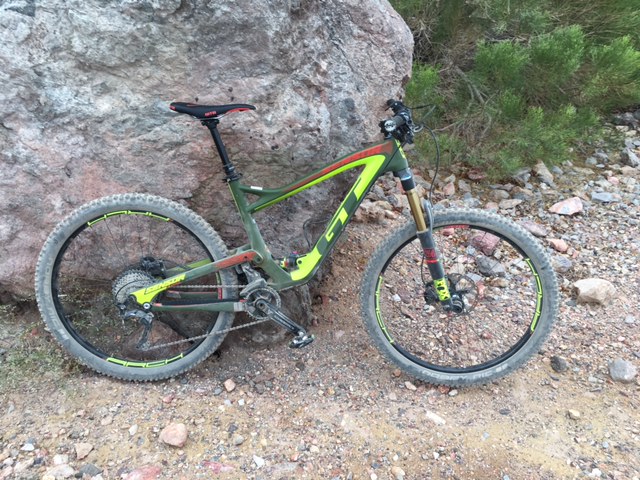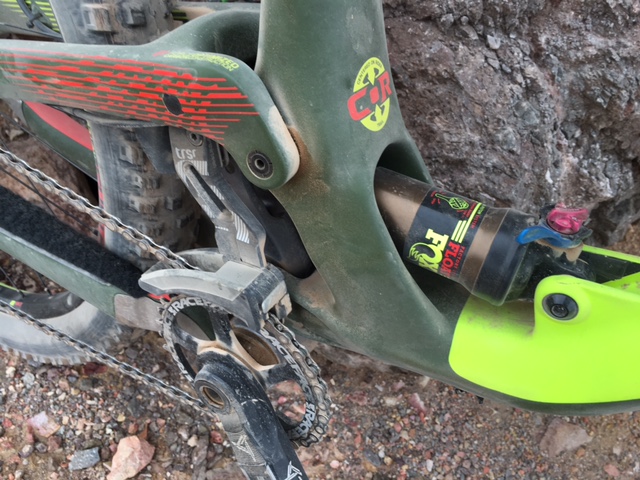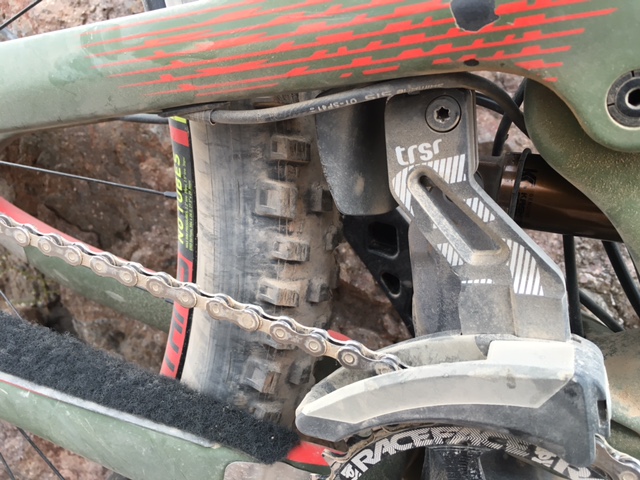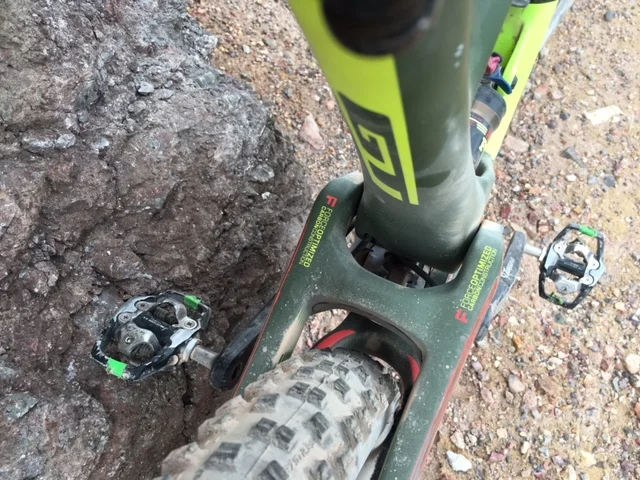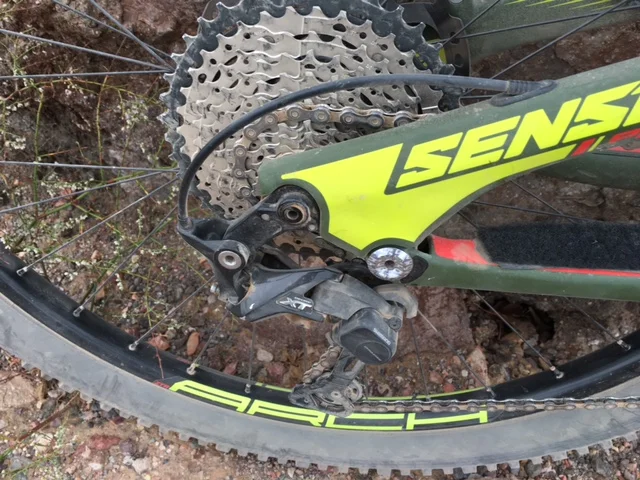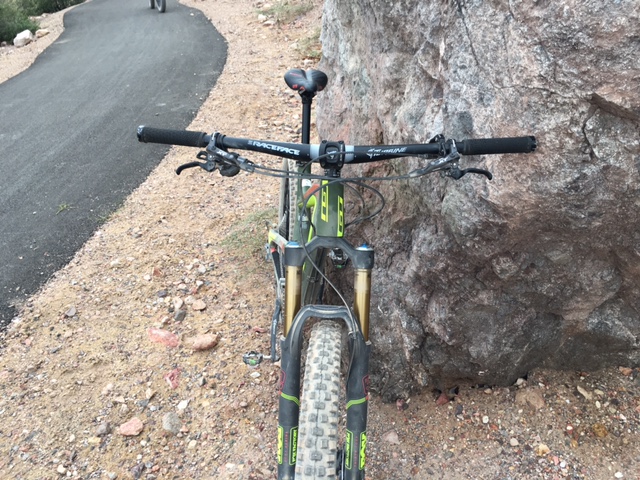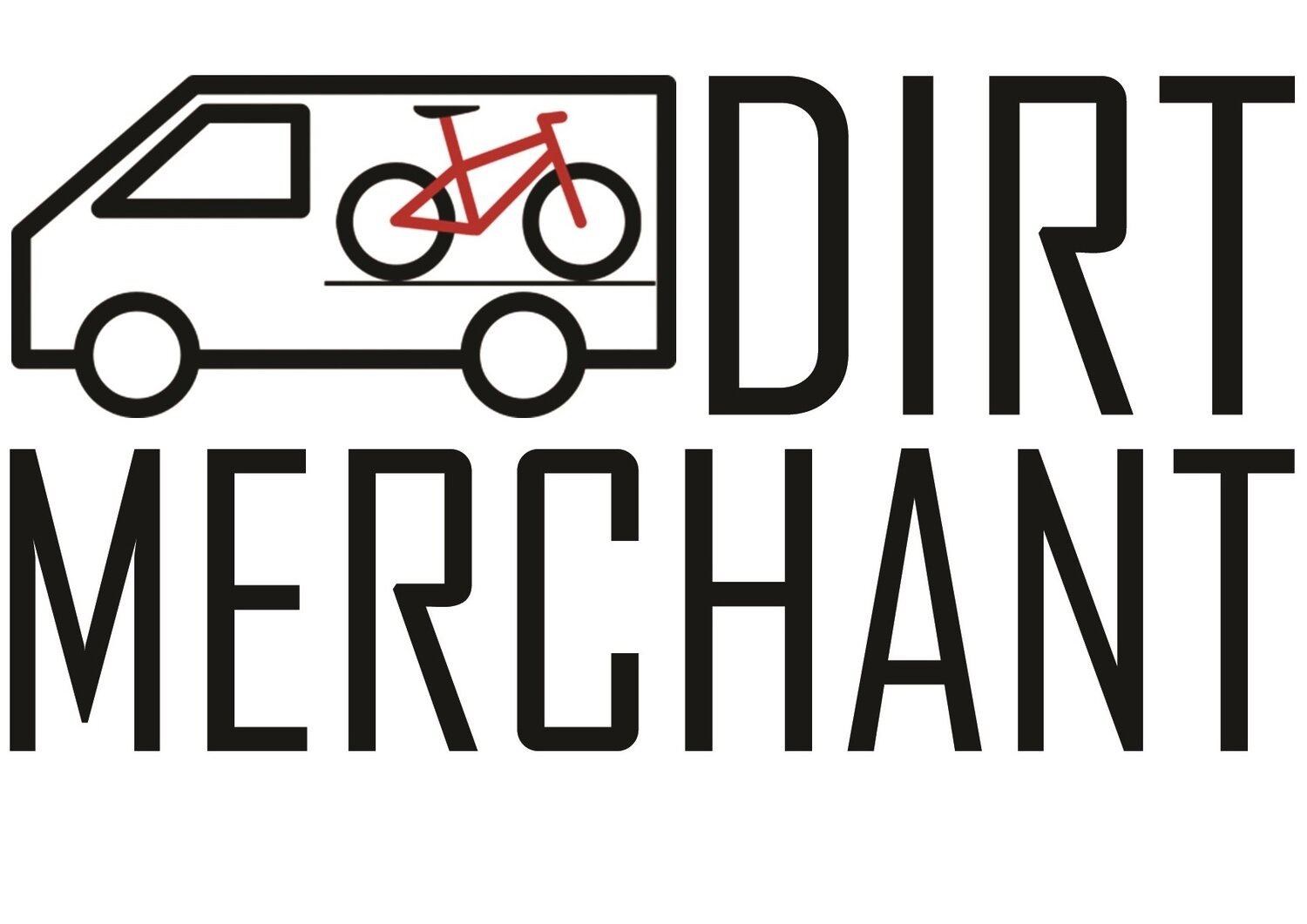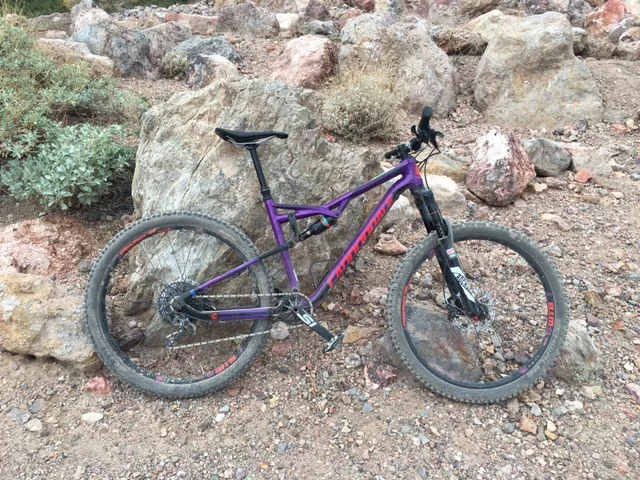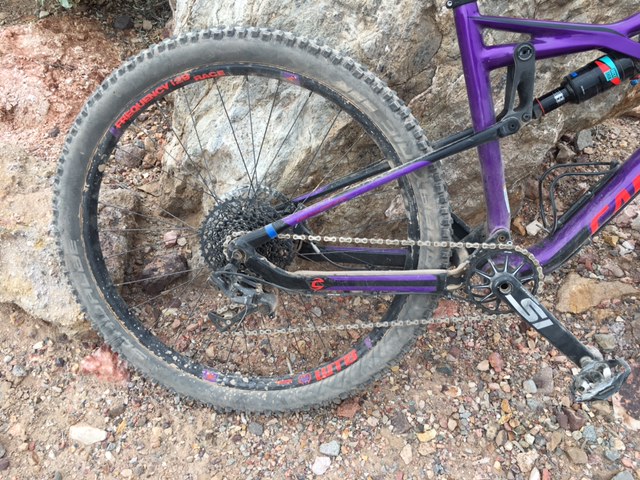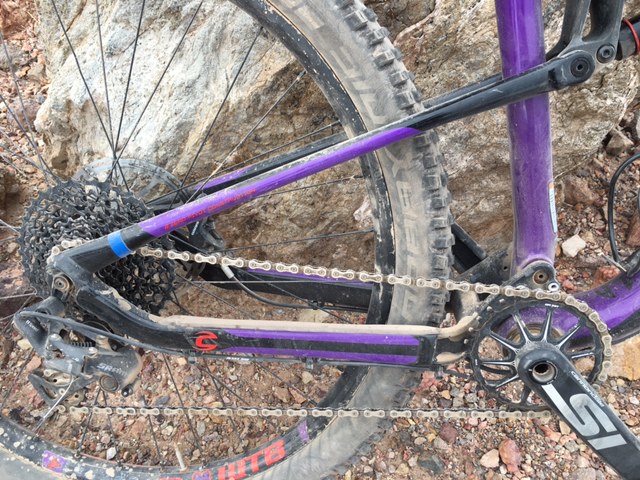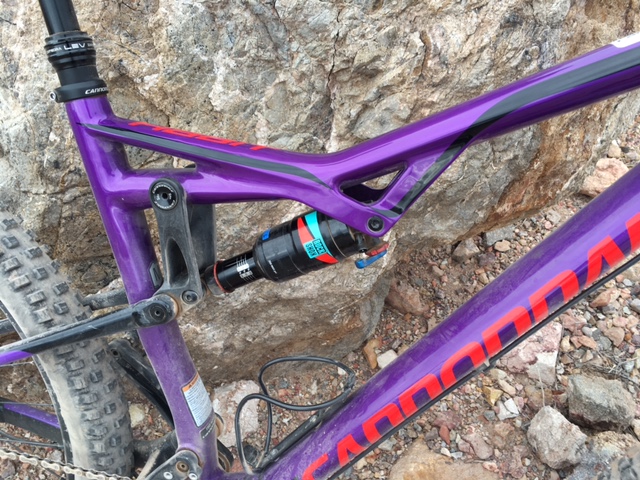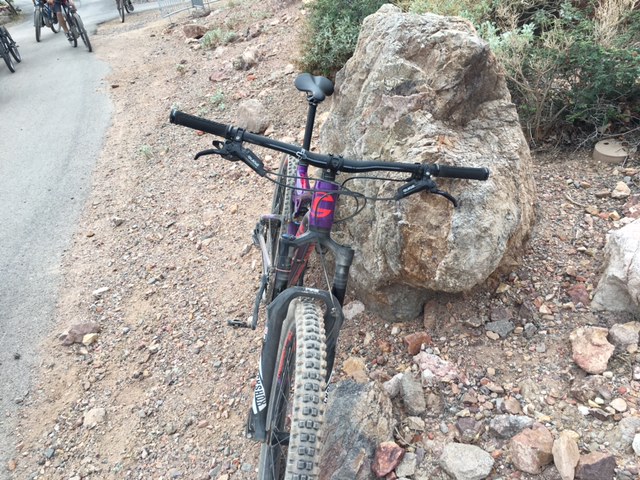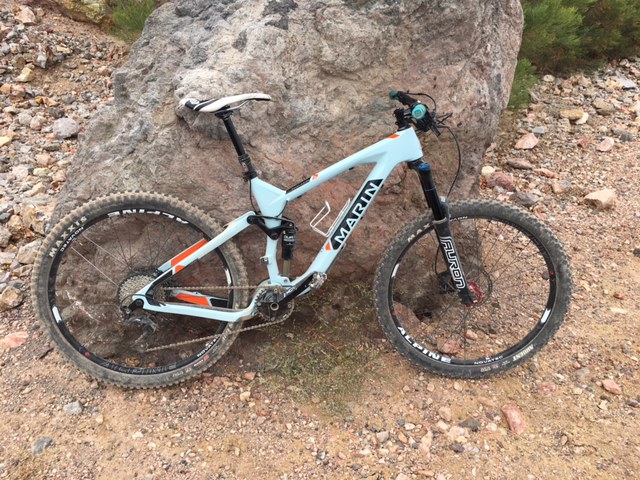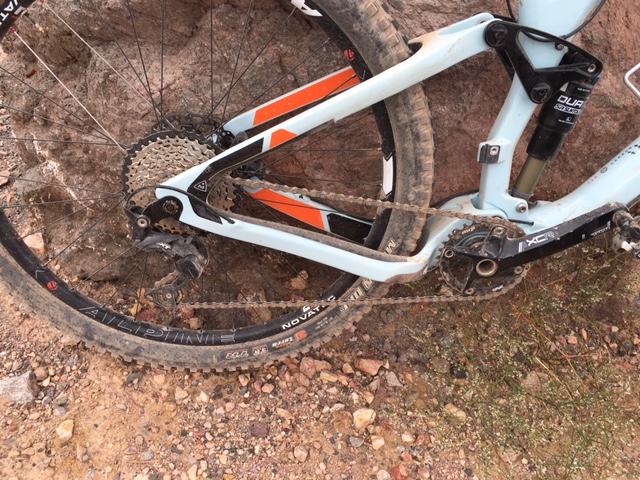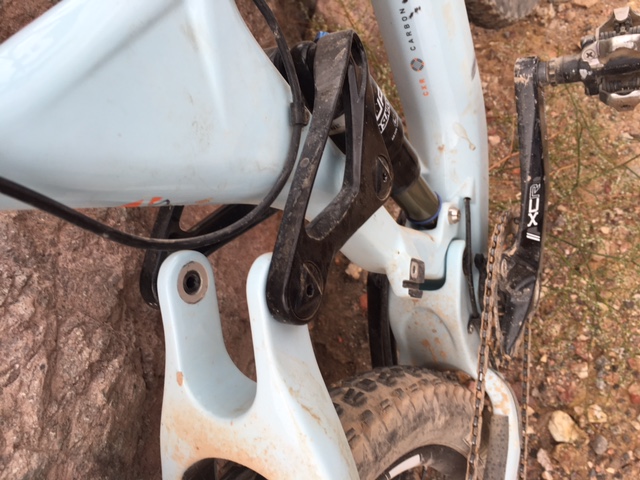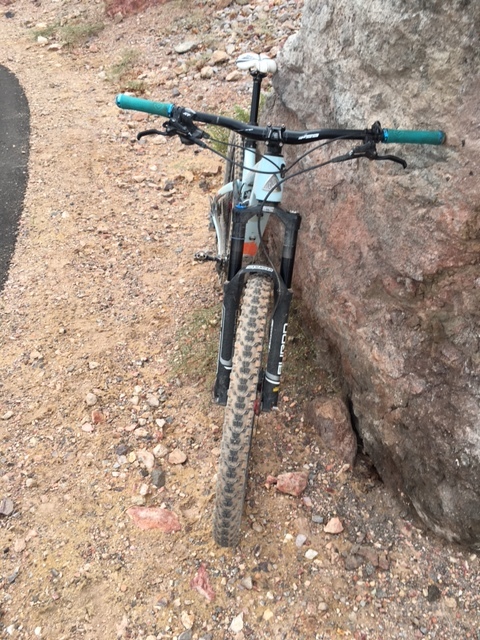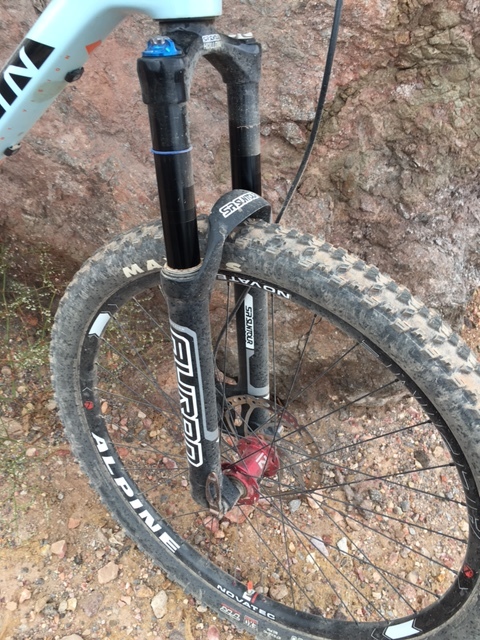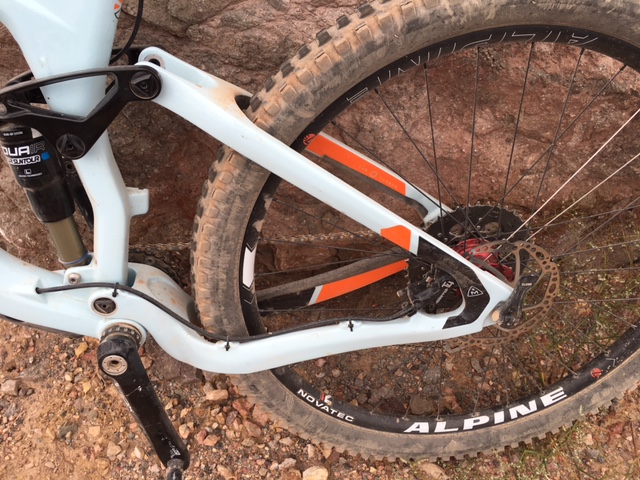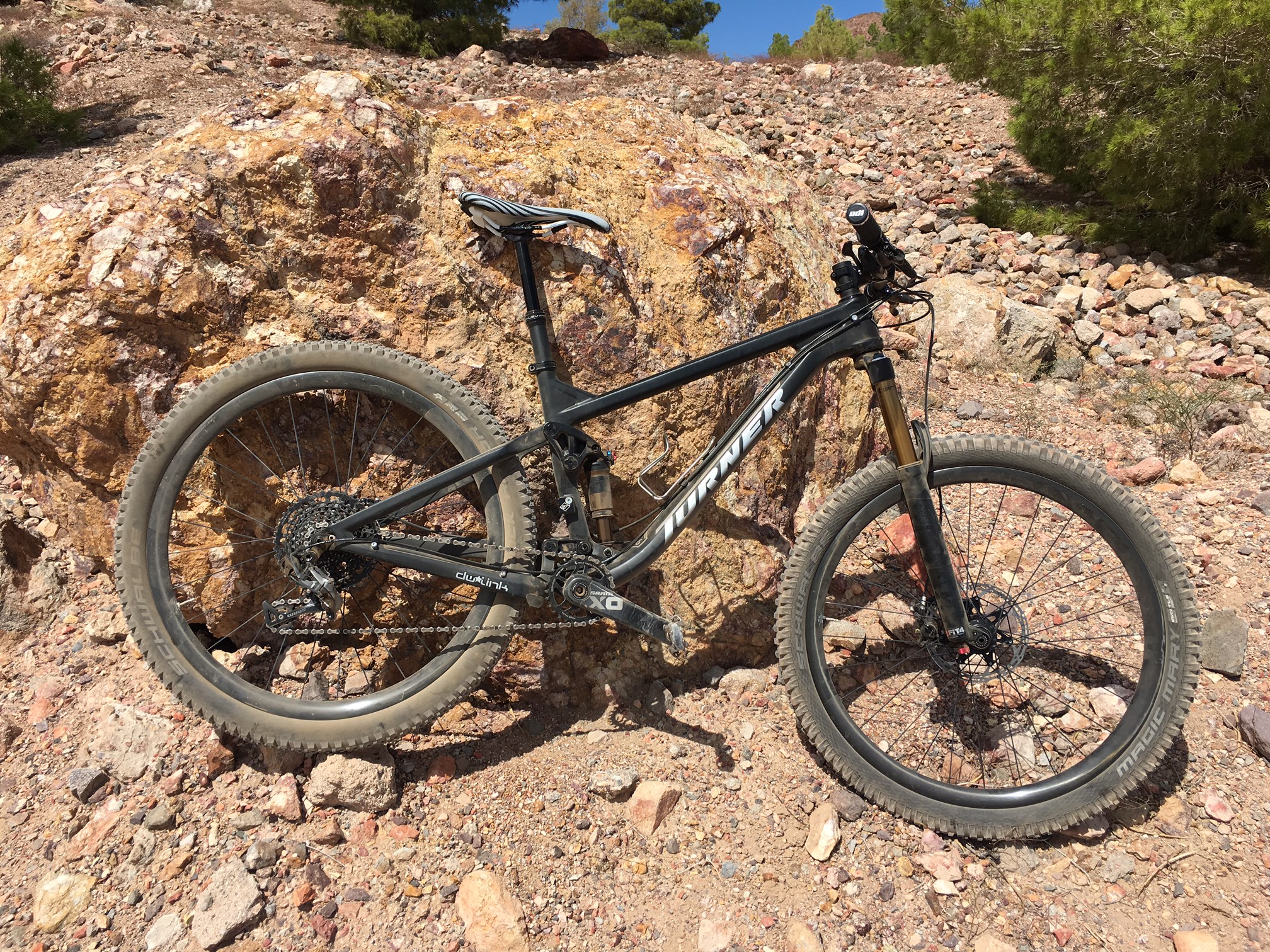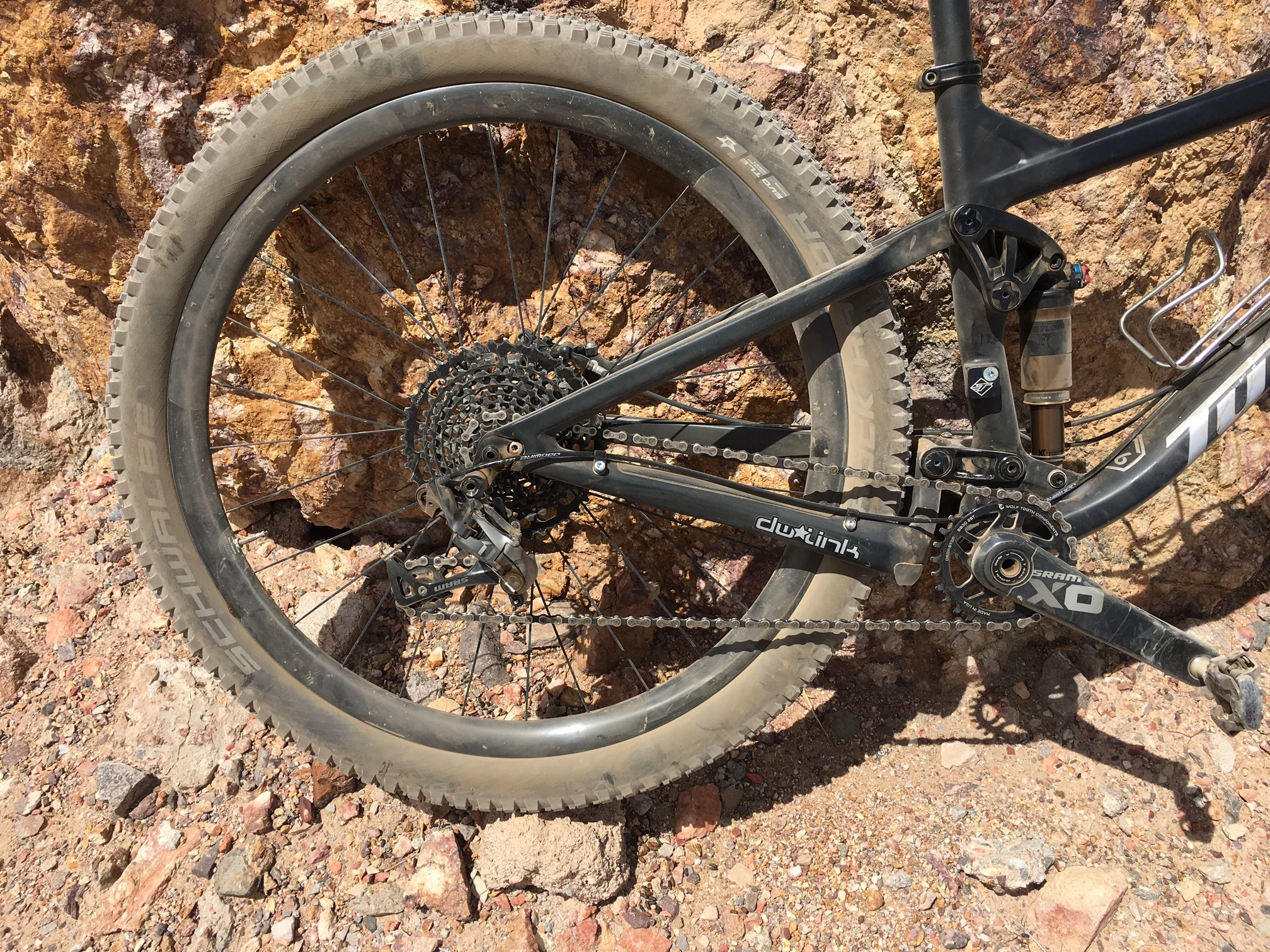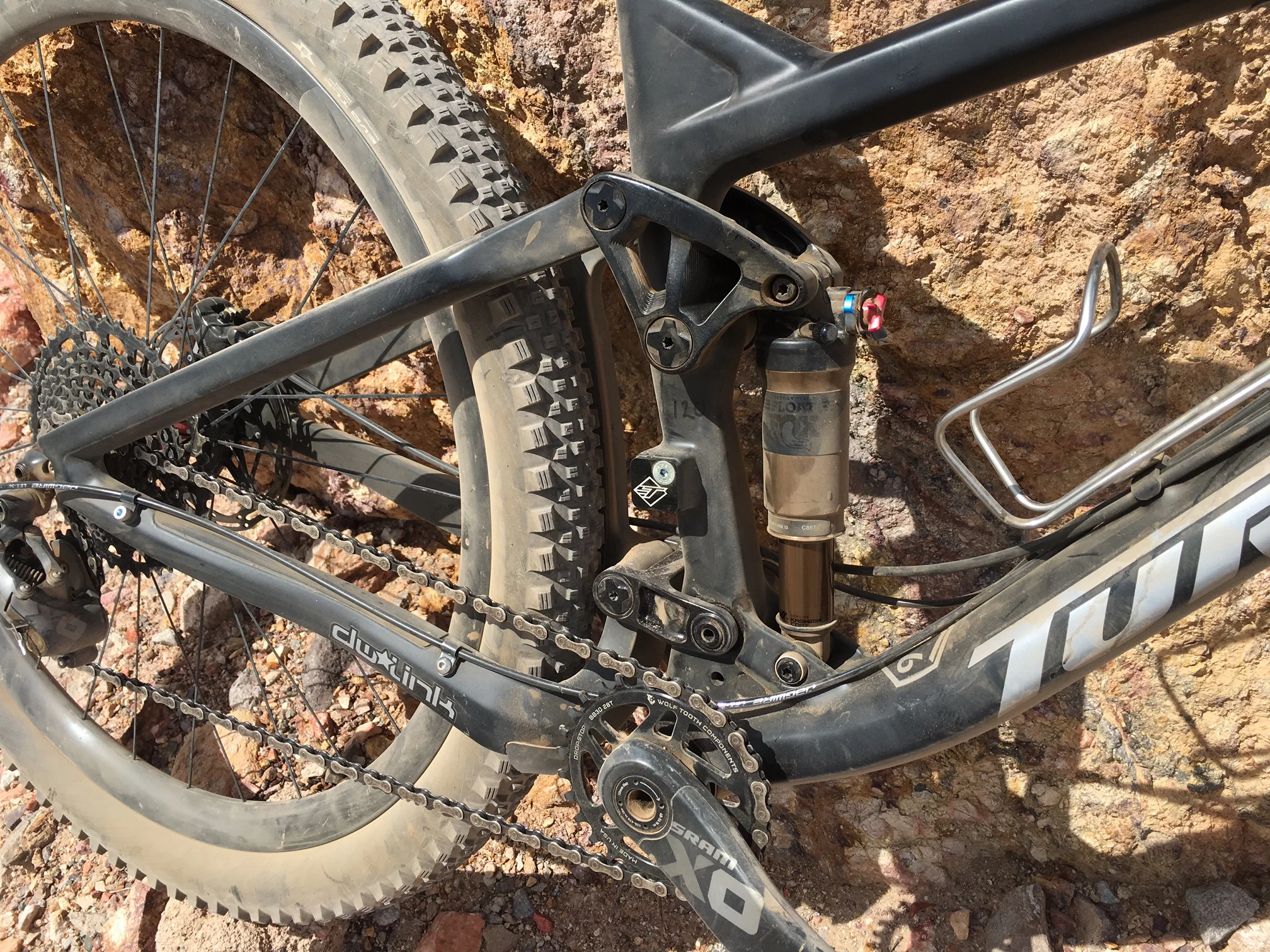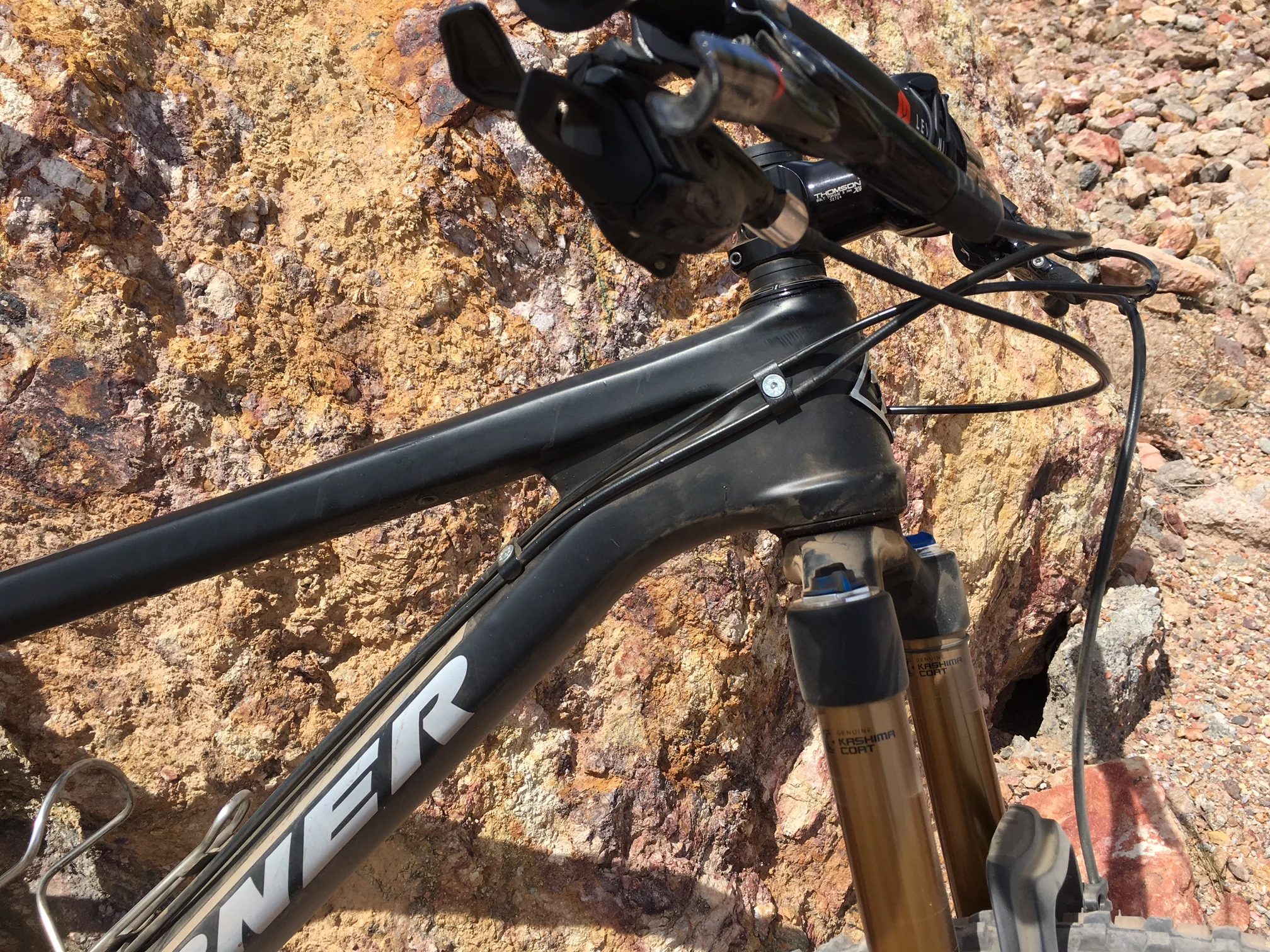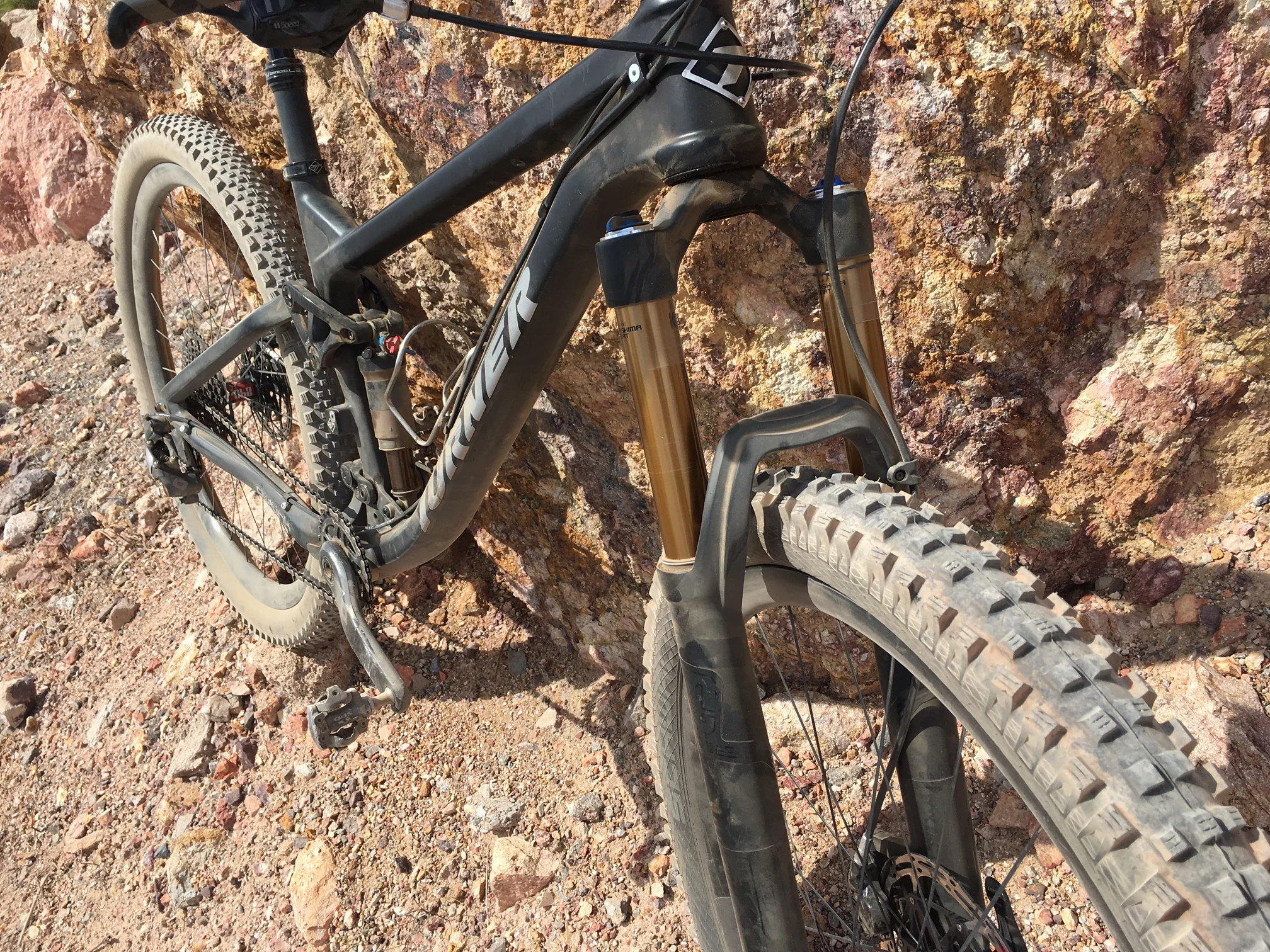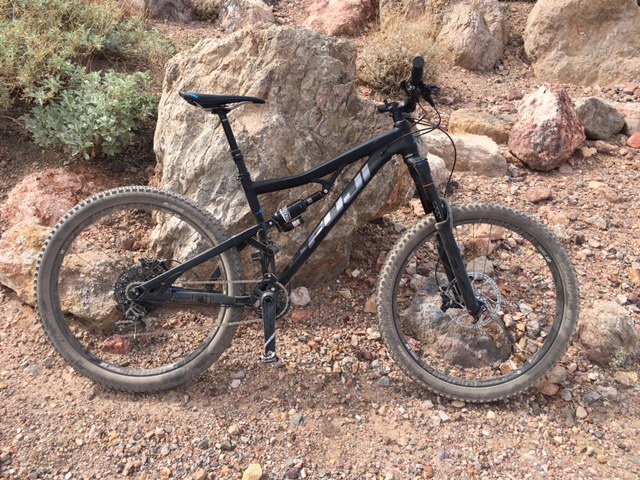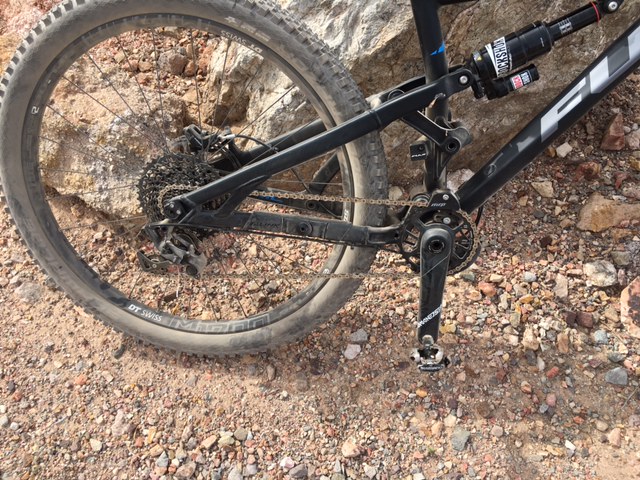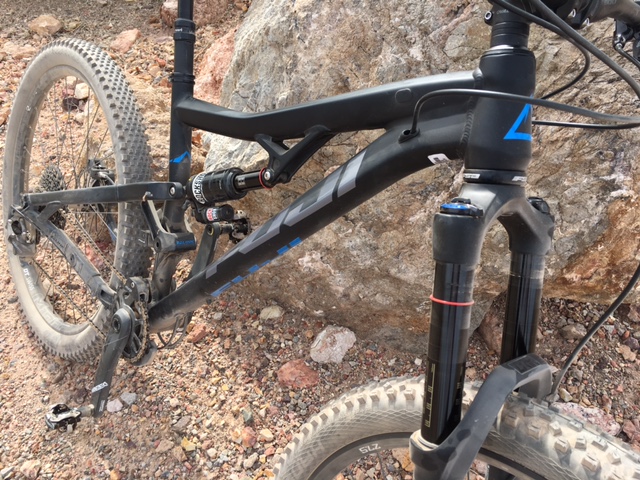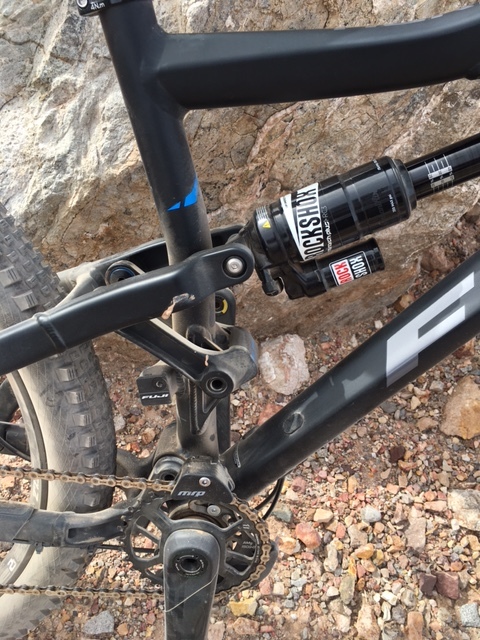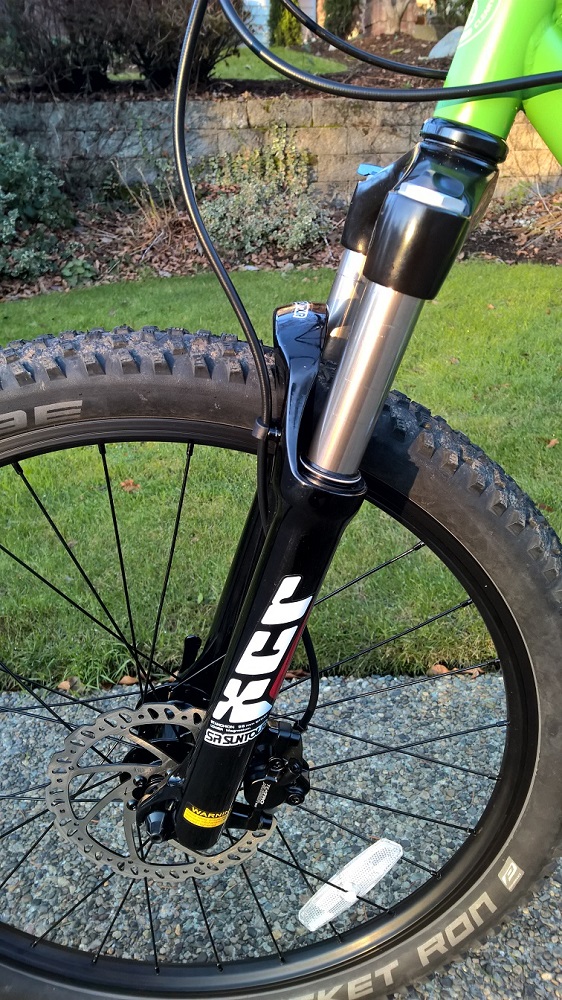All of the tires chosen for this test were known to be strong performers and this was supported by our testing experience on these tires. What this test is looking to convey is the relative strengths and weaknesses of the tested tires. Overall, the testers seemed to prefer tires that were able to best balance multiple performance characteristics. The fundamental performance attributes common to all of the more preferred tires were good cornering traction and predictable steering/handling for front tires and a balance of rolling resistance with good climbing traction for rear tires.
Front Tire Summary:
In our Summer 2015 XC tire test (http://www.dirtmerchantbikes.com/special-events/2015/7/19/pacific-northwest-summer-2015-xc-tire-comparison-test), we had introduced the idea of Usable Rolling Resistance. The idea was that the fastest XC/Race tires are those that combine low rolling resistance with sufficient climbing traction to not lose efficiency from tires spinning out on climbs. For front tires, there is perhaps a similar paradigm in which Usable Cornering Grip in which the perceived cornering ability of a tire is the result of both its absolute cornering traction limits and the level of feedback on traction limits that tire provides to help riders access more of its available traction.
This concept of Usable Cornering Grip was reflected in the test riders’ tire preferences that favored tires that provided both high levels of cornering grip with the steering feel/handling to be able access more of this available grip. Steering feel and good feedback on how much traction is available was almost as important as absolute cornering grip.
The DH-F was clearly the best front tire in the test providing high cornering grip with good steering feel and predictable handling at the limit. Unlike some other front tires with high levels of cornering traction that we’ve previously tested, the DH-F also provides a high degree of steering feel providing clear indications of when the tire is about to slide. Some other tires that we’ve previously tested have had high cornering traction, but were less communicative about the limits of that traction.
It was surprising that the Butcher was the least preferred of the three front tires tested, as it was rated higher than the Hans Dampf on all four front tire rating factors. The best explanation that I can give for this result is that compared to the Butcher, the Hans Dampf has a more communicative steering feel which riders appreciated. The Butcher tended to have a softer initial turn-in feel and was a bit more disconnected feeling when approaching cornering limits. This hampered test riders’ ability to maximize the Butcher’s reasonably high cornering traction.
The Hans Dampf provided a lively ride and cornering feel, but was let down by having lower overall cornering traction than the Butcher or the DH-F. The Hans Dampf certainly is an entertaining tire to ride when compared in isolation, but the DH-F provides only slightly less steering response with a more solid cornering feel.
Rear Tire Summary:
The performance of the rear tires compared in this test was closer than the results for the front tire comparison. Of the three tires tested, the Purgatory was perhaps the weakest with the highest perceived rolling resistance, lower cornering traction limits, and less communication from the tread about available traction. The Nobby Nic provided reasonable levels of climbing and cornering traction, but excelled in rolling resistance and handling feel. Having a Nobby Nic as rear tire provides an enjoyably lively and fast rolling feel that seems to be characteristic of Schwalbe tires (with the exception of the Magic Mary and other more DH-oriented tires). The DH-R had the best balance of traction and rolling resistance. Even with an aggressive tread design, the DH-R rolled surprisingly well. On balance, the testers all picked the DH-R as their number one choice for rear tire.
In deciding between the DH-R and the Nobby Nic, the DH-R is the best all-around choice when a higher level of rear tire cornering and climbing traction is desired. Note though that all three of these tires provide a high level of climbing traction so choice is really between a high level of climbing traction and the best climbing traction available. The Nobby Nic is potentially a good choice for riders that are seeking to have their bikes feel and be faster. More front tire cornering traction is generally always beneficial, but for rear tires, rolling resistance is as important of a consideration as cornering traction
Additional Considerations:
Ease of Tubeless Setup by Brand:
[Caveat: This is on Stans Flow EX rims so certain brands may happen to match better with the rim diameter and profile of these rims. In particular, WTB TCS beads are known to be a tighter fit, though my experience has been that I’ve had no issues mounting a WTB Vigilante and a WTB Trail Boss on Arch EX rims. Your experience will likely vary with different rim brands/models.]
Schwalbe: Consistently, Schwalbe tires used in our tests have been the easiest to set up tubeless on the Stans Arch EX rims with 15 of the 17 Schwalbe tires we have mounted in our three comparison tests seating with only a floor pump and no additional manipulation beyond just mounting the tire and airing it up. About 2/3 of the Schwalbe tires held air even without sealant and all tires held air after doing a shake and distribution of sealant.
Continental: Of the 6 Continental tires that we have mounted, only 1 of the 6 seated easily with a floor pump, 4 required additional manipulation to seat and I gave up on seating one by hand (and went to the gas station to use their air compressor). All of the Continental tires lost air pressure over time until I did a second shake and distribution of sealant to seal the bead interface.
Maxxis: 5 of the 6 Maxxis tires that we have tested seated easily with a floor pump and 1 required some additional manipulation to seat with a floor pump. 3 of the 4 tires held air after doing a shake and distribution of sealant and the remaining tire also held air after a second shake and distribution of sealant.
Specialized: 2 of the 2 Specialized tires that we have tested seated easily with a floor pump. Both of the tires held air after doing a shake and distribution of sealant. Also, kudos to Specialized for the bead design on their 2Bliss tubeless ready tires. The two Specialized tires tested with the 2Bliss design have butyl rubber coated tire beads which promotes a more airtight seal between tire and rim after tires are mounted onto a rim but before seating of the tire beads. Seating a tubeless tire with a hand pump requires the tires to have a sufficiently airtight seal with a rim to be able to use air pressure to seat the tire bead. The butyl rubber coating the 2Bliss tire beads helps create this level of seal between tire and rim.
Previous Editions of our Tire Testing Reports:
If you’re interested in reading previous editions of our tire testing reports, they are located at:
Winter 2015 – Enduro/Trail Tire Comparison Test 1: http://www.dirtmerchantbikes.com/special-events/2014/11/20/tire-comparison-test-report-2015-nobby-nic-high-roller-ii-neo-moto-hans-dampf
Winter 2015 – Enduro/Trail Tire Comparison Test 2: http://www.dirtmerchantbikes.com/special-events/2015/1/15/pacific-northwest-winter-tire-comparison-test-session-2-2015-nobby-nic-mountain-king-ii-trail-king-vigilantetrail-boss-magic-mary-hans-dampf
Summer 2015 – XC Tire Comparison Test: http://www.dirtmerchantbikes.com/special-events/2015/7/19/pacific-northwest-summer-2015-xc-tire-comparison-test
Tires slated for testing in Summer 2016 & Winter 2017:
Our tire testing plan for the rest of 2016 is as follows:
June 2016:
Dry Conditions XC or Race Tire testing – TBD based on reader interest
Benchmark: Schwalbe Rocket Ron 2.25 (front & rear)
Other tires considered for inclusion: Schwalbe Racing Ralph, Maxxis Ardent Race, Vredestein Black Panther XTRAC, Continental Race King
-- or –
Dry Conditions Semi-Slick Rear Tire testing – TBD based on reader interest
Benchmark: Maxxis DH-F (front)
Rear tires considered for inclusion: Maxxis Minion SS, Specialized Slaughter, Maxxis Tomahawk, Schwalbe Rock Razor, WTB Riddler
November 2016: Wet Conditions Enduro/Trail Tire testing –
Benchmark: Maxxis DH-F (front) / Maxxis DH-R or Schwalble Nobby Nic (rear)
Other tires considered for inclusion: the new e*thirteen TRS Race (https://bythehive.com/pages/tires), Bontrager SE5, Michelin Wild Rock’R/Wild Grip’R, Schwalbe Fat Albert Front & Fat Albert Rear, Schwalbe Magic Mary, Maxxis Aggressor
Please feel free to reach out to Dirt Merchant Bikes by e-mail at jeff@dirtmerchantbikes.com with your preferences for tires to test.
Tires that we carry
Based on the results of our two recent tire comparison tests, Dirt Merchant Bikes will be carrying the Schwalbe Rocket Ron tires in addition to the Nobby Nic, Hans Dampf and Magic Mary in all wheel sizes and widths for the summer riding season. We will also carry Maxxis DH-F/DH-R, High Roller II, and Ardent tires as a value priced option.
The Schwalbe tires that we carry & our pricing is:
Schwalbe Nobby Nic (new HS 463 version) Evolution Line –26”, 27.5” & 29” tire sizes: Regularly $67.99,
Schwalbe Rocket Ron Evolution Line –26”, 27.5” & 29” tire sizes: Regularly $67.99,
Schwalbe Magic Mary Evolution Line –26” & 27.5” tire sizes: Regularly $67.99,
Schwalbe Hans Dampf Evolution Line – 26”, 27.5” & 29” tire sizes: Regularly $67.99,
Typically, we will have the Pacestar (normal) and Trailstar (soft) compounds with Snakeskin/TL-Easy casing in stock with VertStar (softest compound) available to ship in 2 days.
The Maxxis tires that we carry & our pricing is:
Maxxis Minion DH-F 3C MaxxTerra EXO/TR
· 27.5 x 2.3: $62.99
· 27.5 x 2.5 Wide Trail: $63.99
Maxxis Minion DH-R 3C MaxxTerra EXO/TR
· 27.5 x 2.3: $62.99
· 27.5 x 2.4 Wide Trail: $63.99
Ordering Tires:
Tires can be ordered from Dirt Merchant Bikes at: http://www.dirtmerchantbikes.com/tires-wheels/
We also welcome any other requests/suggestions for our tire testing program. If you have any questions/comments about this tire comparison test or questions about tires, please e-mail Dirt Merchant Bikes at jeff@dirtmerchantbikes.com
